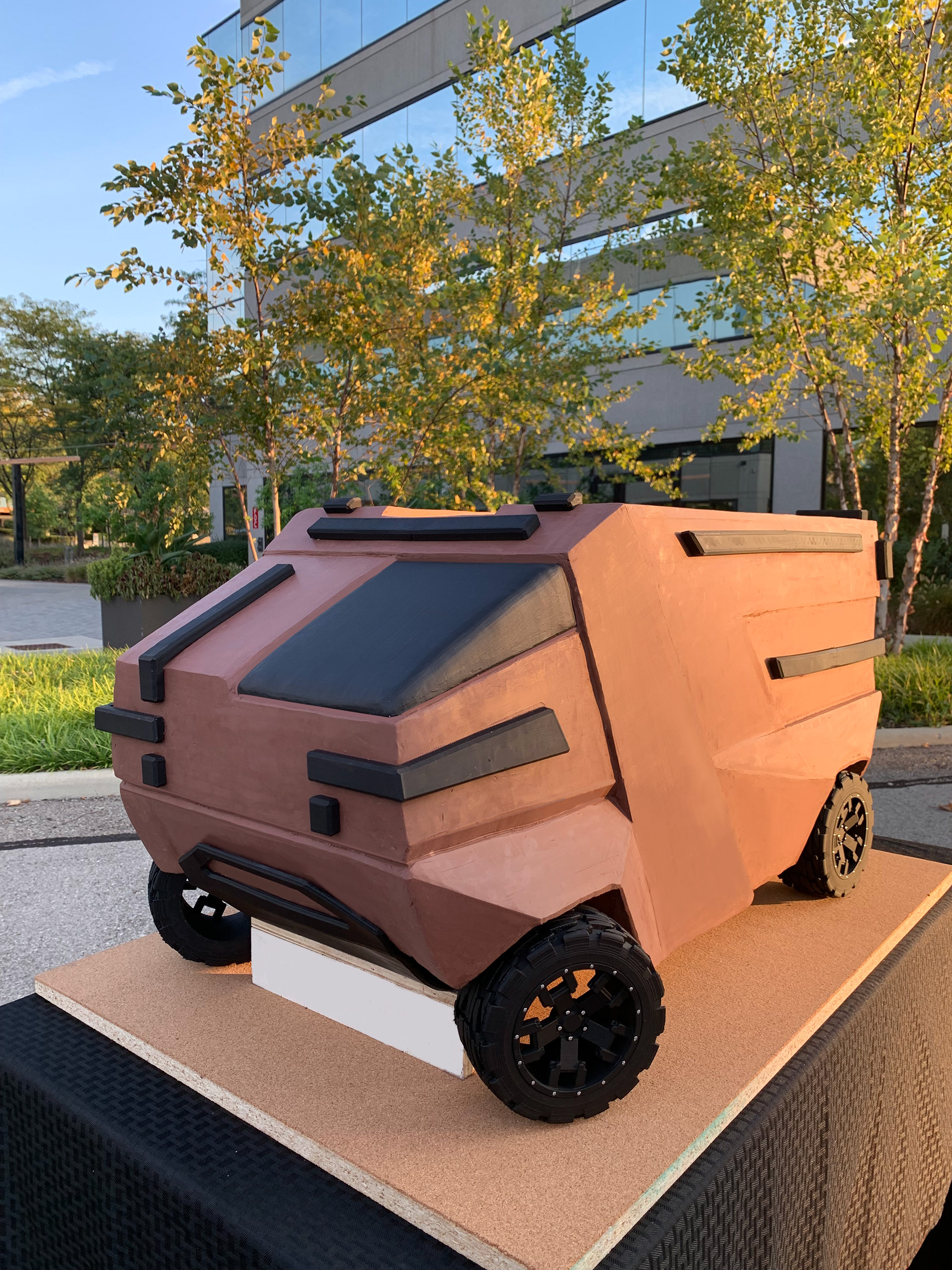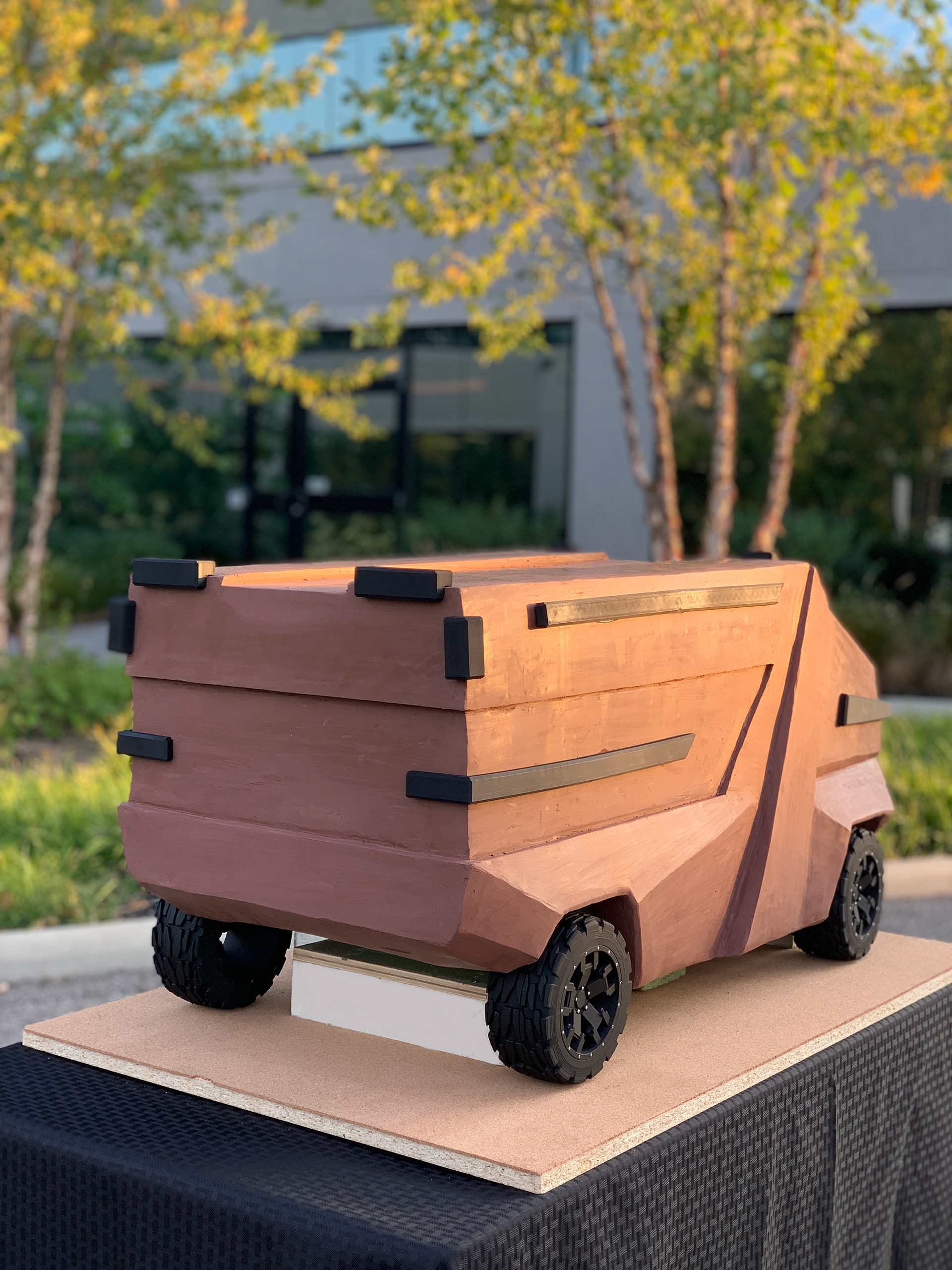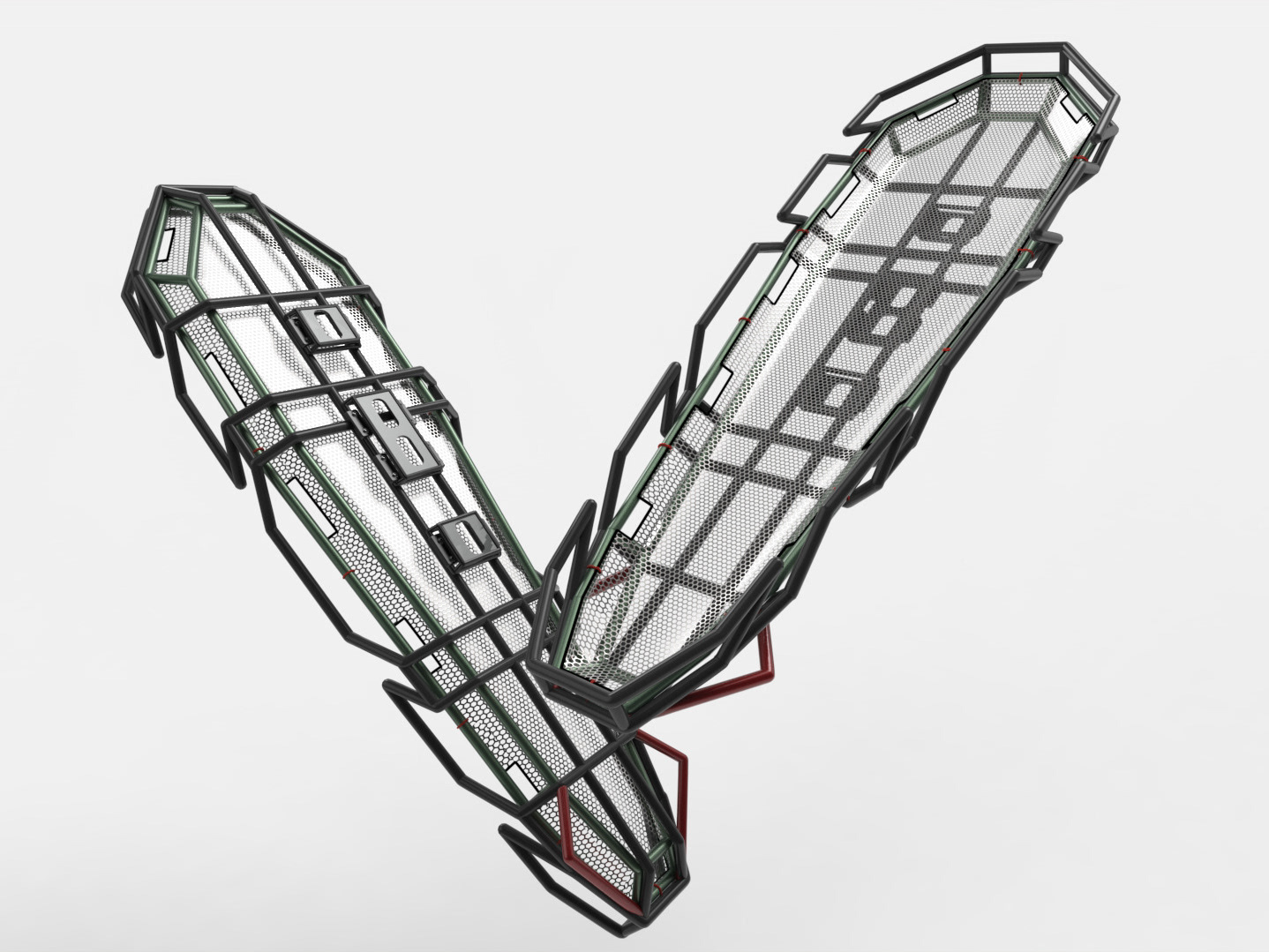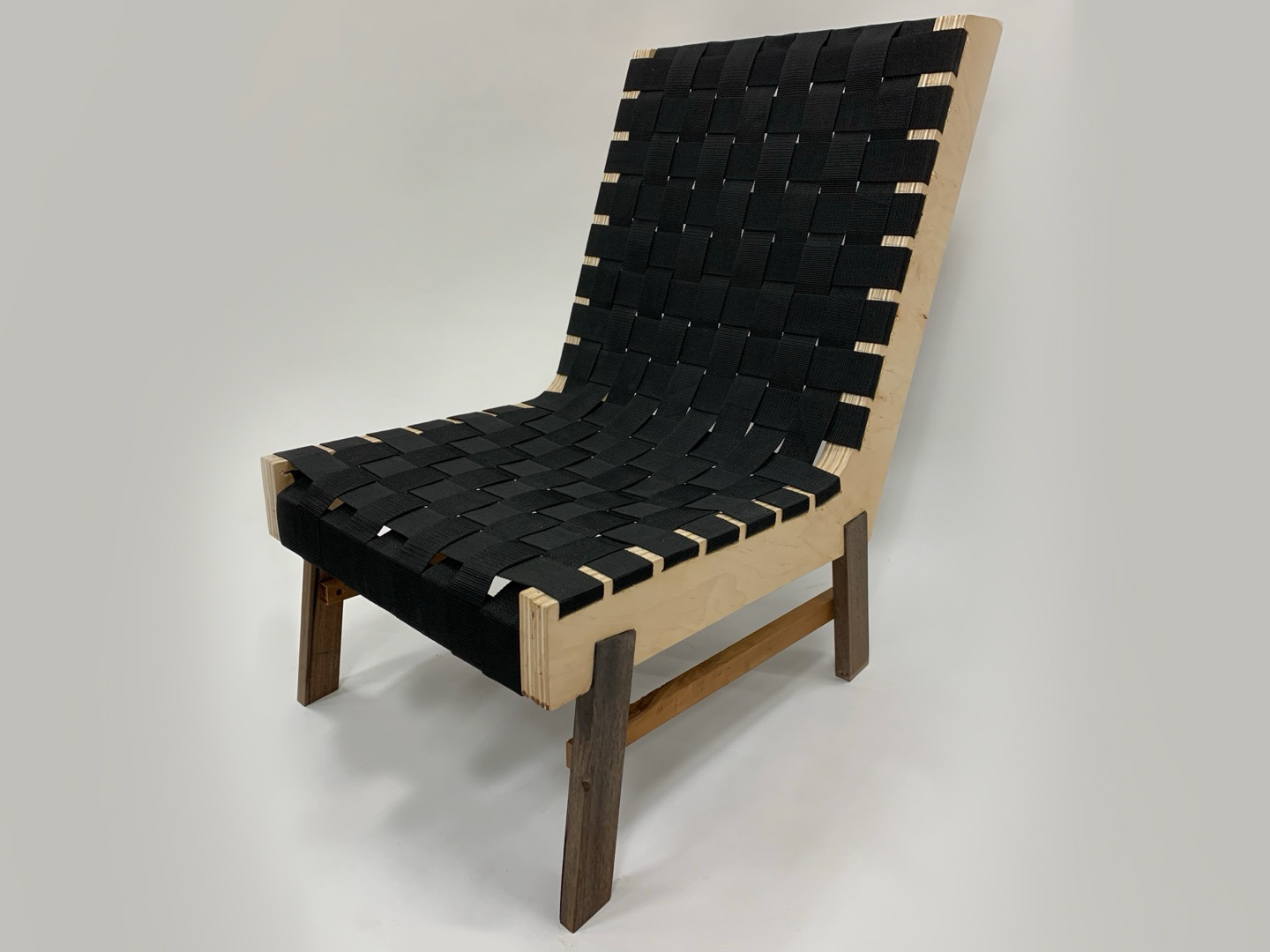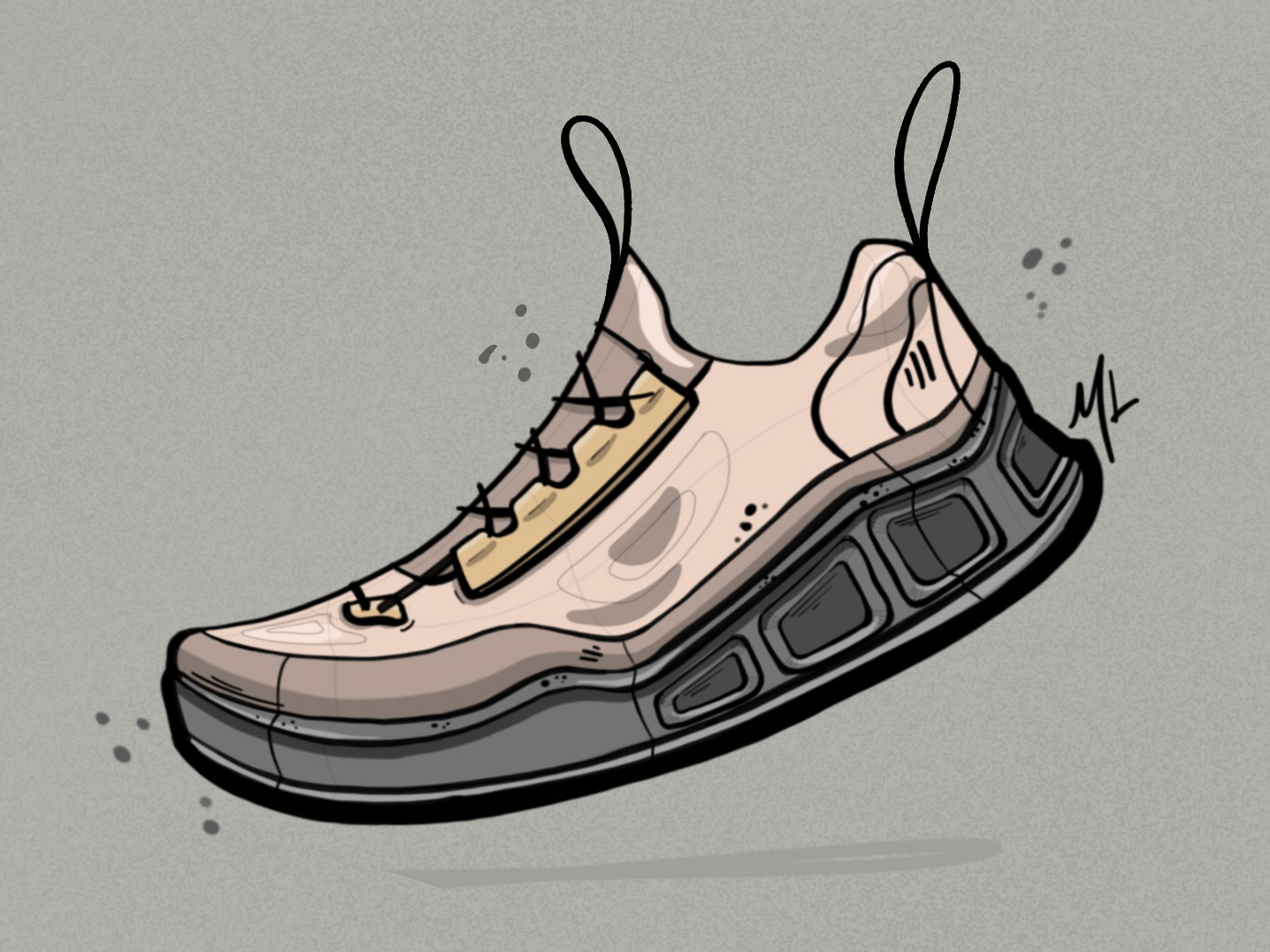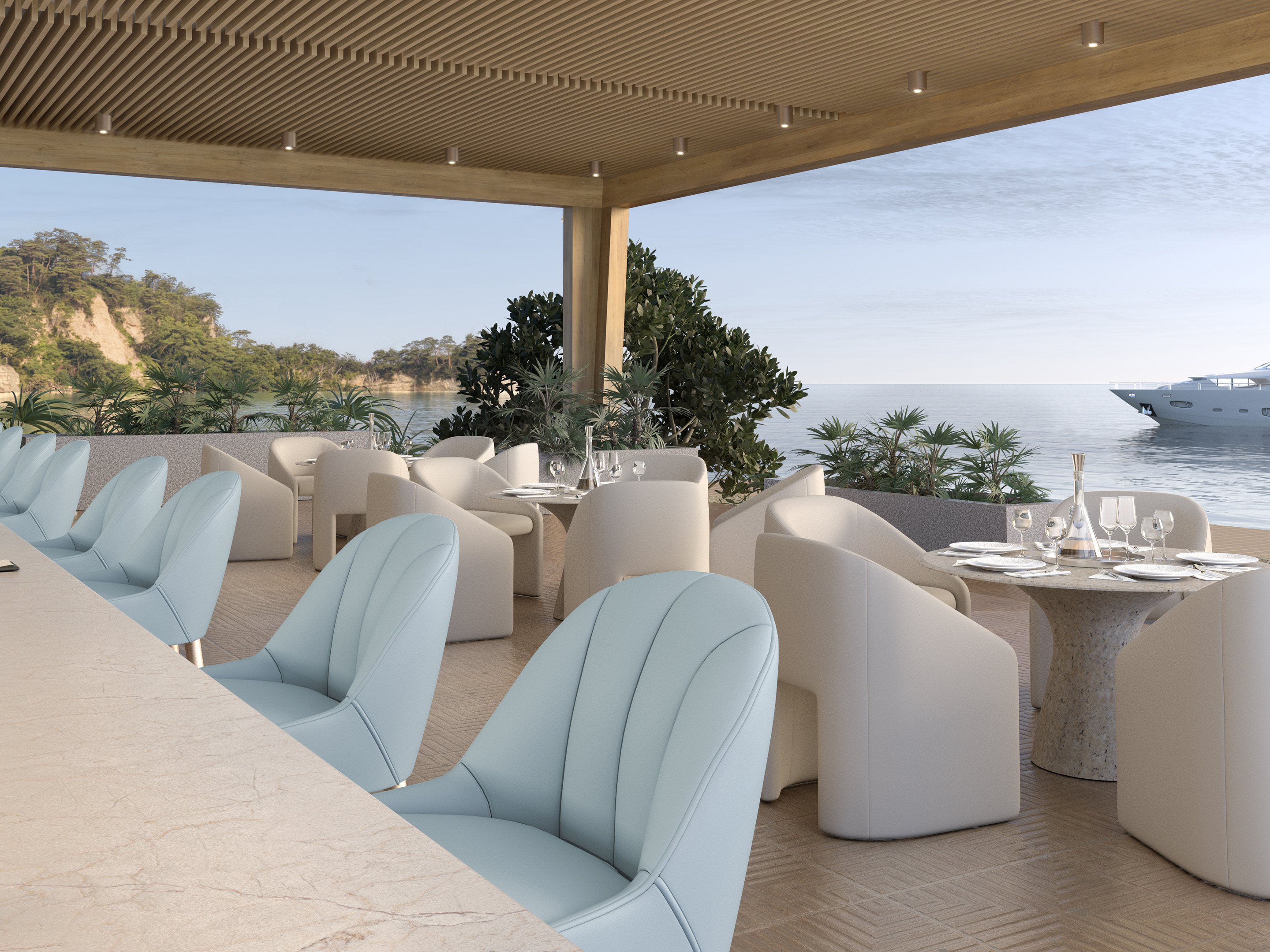

Preliminary ideation focused on maximizing interior space and user comfort. Sketches explored forms that balance functionality with visual appeal, leading to a final concept featuring dynamic lines to convey forward motion. The design incorporates an asymmetric front, providing medical personnel with additional room to work or store supplies. The boxy shape aligns with Canoo’s brand identity and maintains the recognizable, traditional ambulance profile.
The concept was selected as one of three winning designs to be modeled in automotive clay. Judges highlighted the design’s balanced proportions, futuristic aesthetic, and overall cohesion as key factors in its selection. Following this, a more refined design was developed by sketching directly over the Canoo fleet vehicle’s skateboard. Full lighting surrounds the vehicle to ensure maximum visibility both en route and at emergency scenes. A lower skid plate was incorporated to allow the ambulance to clear obstacles, and rear and right-side entrances provide rapid access for the driver and additional personnel. (A secondary vehicle is shown in the upper left but was not part of this project’s focus.)
To stay true to the design drivers and maximize interior space, an asymmetrical front was incorporated. This design choice significantly increases usable floor area, providing more room for medical equipment, supplies, and additional passengers. By subtly shifting the front geometry, the vehicle maintains its streamlined aesthetic while enhancing functionality, ensuring that interior layout and workflow are optimized for emergency response scenarios.

Sketching rough details on the front of the vehicle

Plotting points and checking for symmetry between sides
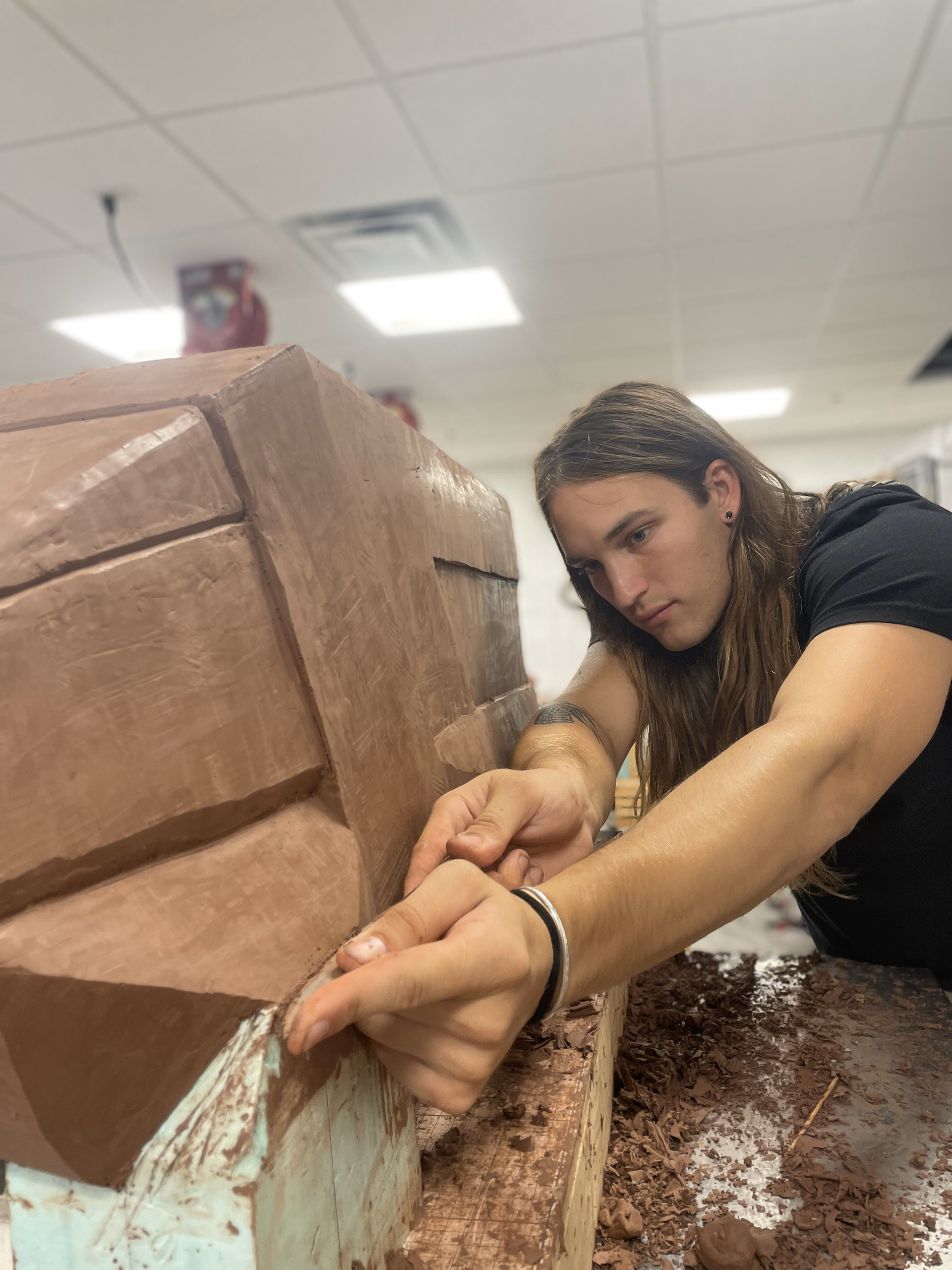
Cutting in the wheel wells
The final design successfully meets the brief, using Canoo’s brand language to create an autonomous ambulance tailored for rural Iowa in 2030. Key features include an asymmetrical front that maximizes interior space for medical personnel and supplies, a lower skid plate for clearing obstacles, full lighting coverage for visibility, and rear and right-side entrances for rapid access. The vehicle’s boxy, rugged shape aligns with Canoo’s identity while maintaining a recognizable ambulance profile, balancing functionality, safety, and a forward-looking aesthetic. Sketch was rendered with Vizcom.
